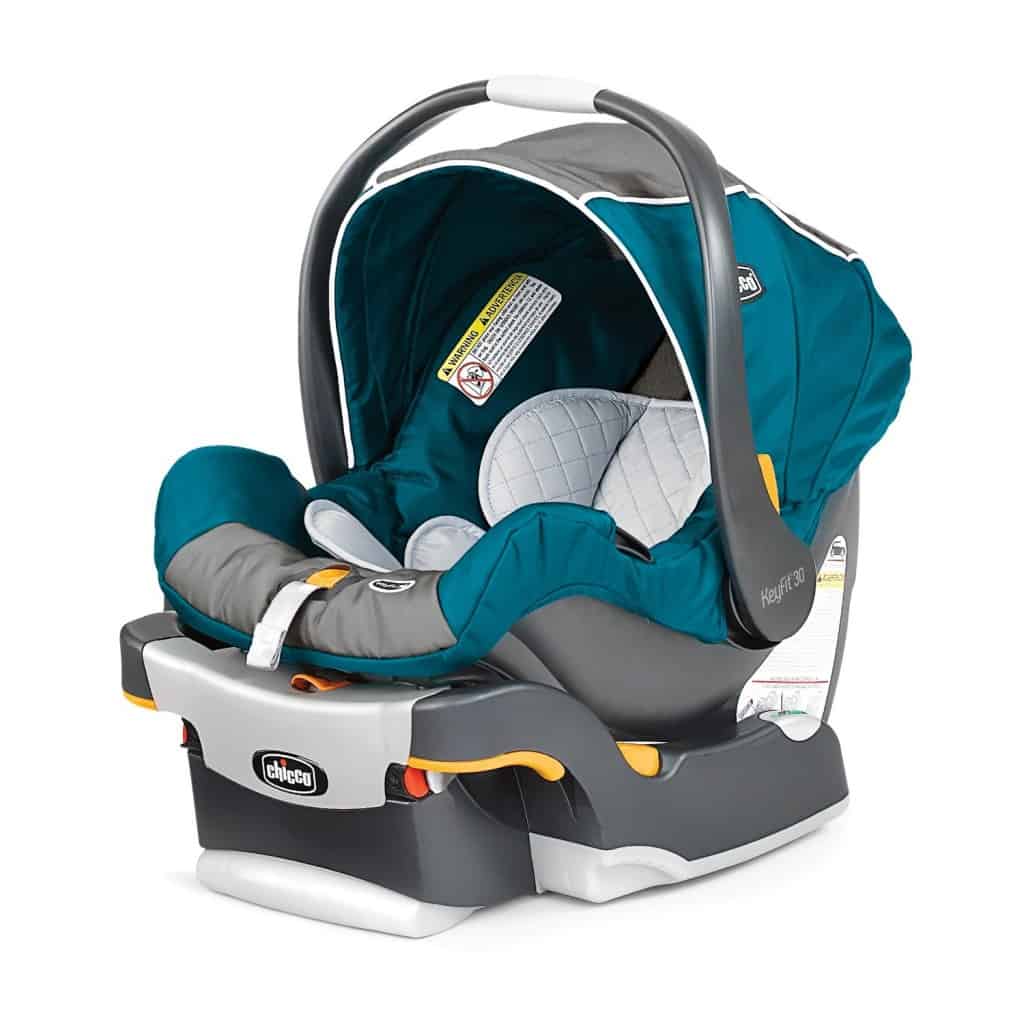
The Best Infant Car Seat 2024
Best Infant Car Seat 2024
Last Updated: . After researching and reviewing 34 different infant car seats, we pick the Chicco KeyFit 30 ($209.99 ) as the Best Infant Car Seat 2024.
Scroll down for our picks for Best Budget-Friendly Infant Car Seat and Best Infant Seat for Urban Parents.
New to infant car seat shopping? Read our 7 Things No One Tells You About Buying an infant car seat.
Crash protection for the Chicco KeyFit 30 is excellent, with added side impact protection making a difference.
The KeyFit gets high scores from our readers on ease of use—installation is a snap and adjusting the harness is easy. The seat also features EPS foam and a newborn insert.
The KeyFit 30 scores an astonishing 90+% approval rating on Amazon (4 and 5 star reviews), with those reviews verified as legit via FakeSpot. (Few infant seats have ratings above even 80%, much less 90%).
The downsides? The seat lacks a no-rethread harness and the canopy coverage is somewhat skimpy.
(Scroll down for a detailed review of this seat and the Chicco brand).
The Best Infant Car Seat
Chicco KeyFit 30
Easy to use and install, the Chicco KeyFit 30 is our pick as best infant car seat on the market today.
Chicco KeyFit 30: Which version & more details
FYI: Chicco makes four versions of the KeyFit—one that works to 22 lbs. (called the KeyFit, $189.99 ) and three that go to 30 lbs. (the KeyFit 30, KeyFit 30 Zip and KeyFit 30 Magic.) Here’s a quick overview of the three 30 lb. limit versions:
• The Chicco KeyFit 30 ($209.99 ). The basic version described above.
• The Chicco KeyFit 30 Zip ( ). Adds a quick-remove machine-washable seat pad, a zip-off canopy, zip on visor and zip-around boot. These are nice add-ons if you can afford the upgrade; the boot especially is welcome if you have a winter baby or live in a cold climate.
• The Chicco KeyFit 30 Magic ( ). Basically the same as the Zip but without the zipppers. The Magic has upgraded fabrics over the Zip, even though it is ten bucks less.
In 2017, Chicco debuted a new version of the KeyFit: the Fit2 ($329.99 $319.99 ). The Fit2’s unique feature is a base that has two stages: a reclined version for infants and a toddler position that sits more upright, so the seat can be used up to age two (35 lbs.). Also new: an anti-rebound bar and a seven-position no rethread harness.
Between all these versions, we like the base model Chicco KeyFit 30 best . . . unless you live in Chicago and have a January birth. Then by all means, go for the Magic or Zip with the boot! If money is tight, the 22 lb. version (the KeyFit, $189.99 ) would be ok if you know your child will be around normal birth weight—keep in mind they will likely outgrow that infant seat sooner than those with the 30 lb. limit seats. FYI: the same base works with either the 22 lb. or the 30 lb. carriers.
We do like the Fit2, based on our initial evaluation. Parent feedback on this newer version has been quite positive—and we like the extended 35 lb. rear-facing limit (especially with eight states now requiring kiddos stay rear-facing until age 2).
Whichever version you choose, all Chicco KeyFits boast a nice list of features: a seat lined with EPS foam for improved side impact protection, thick seat padding, multi-position canopy and comfort grip handle.
Chicco hired a former Graco engineer (who worked on the SnugRide) to design the KeyFit and it shows in the details . . . the base has a “single-pull” LATCH adjustment, a spring-loaded, leveling foot (pictured below) to account for uneven back seats and even a smooth underside to keep from damaging your back seat upholstery.
As you’d expect from Chicco, the fashion of this seat has a hint of Italian flair and there is even a newborn insert to better fit smaller newborns and preemies.
Our readers have been very positive about the KeyFit’s ease of use, lauding the no-twist, easy-to-adjust straps, the ability to leave the handle in the “up” position when driving (most seats require it to be lowered), and overall ease of installation.
Flaws but not deal breakers
Well, no seat is perfect. Here are our quibbles with the KeyFit 30:
The KeyFit carrier weighs 9.4 lbs., a tad heavier than other similar seats. It takes two hands to release/rotate the handle on the seat.
The sunshade has its share of critics. Some readers tell us they think it is too small and doesn’t offer enough coverage (even with the extended visor that tucks away when not in use). When you fold the canopy back, it sometimes is hard to reach the handle to release the car seat from the base—especially if you drive a smaller vehicle where the front seats are close.
A few readers also report the fabric doesn’t breathe, so the seat can get hot.
The Chicco’s stroller compatibility used to be an issue, but given the soaring sales of the KeyFit, more brands now offer adapters that fit the seat. Still, it might be wise to check to see if the stroller brand you want has a specific adapter for the KeyFit . . . a few smaller stroller brands still don’t.
What makes this seat better compared to lower priced infant car seats
The Chicco KeyFit 30 has several features that make it easier to use and install compared other seats in the $100 to $200 range. Take the unique center-pull LATCH connector. This makes LATCH installs a breeze. By contrast, other infant seats have two LATCH connectors which must be individually tightened. Here’s what the SuperCinch One-Pull latch looks like:
Who else likes it
Amazon customers give the KeyFit 30 a 90% positive rating (four or five star ratings) and Consumer Reports ranked the KeyFit and KeyFit 30 at the top of their most recent car seat rankings. The NHTSA gives the seat four out of five stars for ease of use.
Also Great
Also Great: Britax Endeavours. The Britax Endeavours infant car seat is also a good pick, especially if you are a fan of Britax strollers (which naturally work with this infant seat without any additional adapters). Priced in line with the Chicco KeyFit 30, the Endeavours runs .
So why recommend a seat at that price? The Endeavours has all the great features of the B-SAFE 35 line of seats, but adds an anti-rebound bar.
Here’s what you get with Endeavours:
Britax’s improved crash protection (which Britax calls SafeCell, a system seen on its convertible seats). The seat features a deep shell that is lined with EPP foam for additional protection in side impact crashes and comes with two crotch strap positions and a no-rethread harness.
Another key feature is a “removable comfort pillow” that better fits smaller newborns and preemies (as small as four pounds). The adjustable base has five positions and built-in lock-offs to help with belt installation. New on the Endeavours is a European-style belt path so you can install it easily without the base–great for Ubers and Lyfts. You also get premium LATCH connectors and an excellent oversized canopy.
What really sets this model apart, however is the anti-rebound bar. Anti-rebound bars help stabilize the seat in a crash offering another level of safety for your baby.
Flaws but not deal breakers
All that safety goodness is gonna cost you, though. Retailing for , the Endeavours is quite a bit more than the Chicco KeyFit 30 but less than premium seats like the Cybex Aton or Nuna Pipa.
We’ve seen scattered reports from parents who say their babies outgrew their Britax infant seats too quickly . . . the deep and narrow seat was too tight for bigger babies. We wonder if the seat criticisms are the flip side of the enhanced side impact protection—the Endeavours looks more narrow because it is deeper than comparable seats and the head wings (side impact protection) make it look narrower. When we measured the Endeavours, it was somewhat narrower and deeper than the Chicco.
So, yes, the Britax seat is narrower than the KeyFit, but visually it seems more confining than the specs indicate. Yes, we can see how babies that are at the top of the weight/height chart might outgrow the seat well before they hit 35 pounds. But that’s probably the exception.
Another negative: the carrier is heavy—slightly over 11 lbs.
Despite these complaints, real world feedback on the Britax Endeavours has been generally positive. Most parents praise the seat as easy to install and use; the quality is excellent.
One major consideration for this seat: stroller compatibility. If you are getting a Britax stroller, then the Endeavours would be a no-brainer. As for compatibility with other strollers, well, that’s going to be hit and miss (mostly miss). Fewer strollers are compatible with Britax’s infant seat, compared with Graco and Chicco.
Best Budget-Friendly Infant Car Seat
Best Budget-Friendly Infant Car Seat. The affordable Graco SnugRide SnugLock Extend2Fit 35 infant car seat is part of the best-selling SnugRide family that has earned high scores from our readers for ease of use and overall quality. Another major plus for the Snugride family: wide stroller compatibility, as most brands have Graco SnugRide adapters.
At this price, we think it is a great value for all its features. Most similar seats with anti-rebound bars and no-rethread harnesses are over $250. Add in the exclusive Extend2Fit extension panel that adds an additional 3 1/2 inches of legroom and you’ve got a winner.
The Extend2Fit also has SnugLock technology, which allows for a simpler, three-step install Graco calls “hassle free.” We’d agree: this base, complete with four recline positions, was a snap to install in our hands-on inspection. The base has four recline positions, newborn body pillow (supports babies as small as 4 lbs.), and sunshade.
One caveat: the carrier for the Graco SnugRide SnugLock Extend2Fit 35 weighs in at a hefty 12.3 lbs. That puts it among the heavier infant carriers on the market.
Also Great
The Safety 1st Onboard 35 is also a good bet for a budget-friendly infant car seat. Running , this seat would make a great option for a second car. The Onboard comes with a newborn insert (works with preemies down to 4 lbs.), is lined with EPP foam and has four harness height positions plus an adjustable base.
While this seat has a huge base that can make it a problem for small car owners, overall it’s a good seat. The features you get for the price are impressive.
One downside for the Safety 1st Onboard 35—stroller compatibility is limited, mostly to the brand’s own family of strollers. Fewer stroller brands have Safety 1st adapters compared with other seats like the Graco.
Best Infant Car Seat For Urban Parents
Best Infant Car Seat For Urban Parents (and those with little space). If you live in the urban core of a city, your criteria for an infant seat is probably different from those who live in the suburbs.
First, you may or may not have a car. That means your infant seat will have to be belted into an Uber/Lyft, requiring quick installation most likely without a base.
Urban parents are more likely to use their stroller to do everyday shopping, requiring an infant car seat to work natively with the stroller for the newborn months. (If you are a heavy user of mass transit, we’d suggest also looking at our baby carrier section on this site—it is easier to navigate stairs down to a subway with a carrier than a stroller/infant car seat).
So here’s our pick: the excellent if pricey Cybex Aton 2 (
Auto Amazon Links: No products found.
The Cybex Aton 2 is the new improved version of the original with an anti-rebound load leg (optional) and added side impact protection. And it does all that at an astonishingly light weight of only 8.8 lbs! (Other infant car seats can tip the scales at 11+ pounds. That may not sound like a lot, but if you are carrying an infant seat up or down stairs to your condo/apartment, you’d notice it).
The Aton2 is also compatible with most Maxi Cosi stroller adapters. That’s important because most upper-end strollers with additional weather protection favored by urban parents only offer Maxi Cosi adapters (sorry Graco fans, there’s often no adapter for you).
For urban parents who don’t have a car but might be taking Uber or Lyft a lot, the Aton 2 is easy to belt in without a base. So what’s the downside: it ain’t cheap. But if you are lugging your baby around Manhattan or other urban area, it’s a great, lightweight option.
The anti-rebound load leg on the base helps the Aton 2 with additional crash protection, as it protects the seat from rebounding in an accident.
If the Aton 2 isn’t available, the similar but more expensive Aton Q is also a good bet.
What’s the difference between the 2 and the Q? The Q includes a new, bigger canopy and top-of-the-line fabrics and padding. The Q also features an enhancement to the Linear Side Impact Protection first introduced on the Aton 2. The Q now has a telescoping side impact bar for additional crash protection—yes, that is a Cybex first. The bar telescopes off the top of the carrier in whichever direction you need protection.
The Aton Q also has a no rethread harness (not available on the Aton 1 or 2) and will fit any Aton base. Price: $400 at Buy Buy Baby. The weight of Aton Q is slightly more than the Aton 2.
What’s New/What’s Next
One trend for infant car seats in the past year are seats that use naturally flame-retardant fabrics. Often wool or wool blends, these car seats eschew fabrics that are treated with flame retardant chemicals (bromines, etc).
The UPPAbaby Mesa was the first to offer this in a limited number of fashions. The Merino wool used in these seats is naturally flame retardant but comes at a price: about a $100 more than the standard seat.
The Nuna Pipa Lite LX ($400), Clek Liing ($400-$480, see below for the wool version) and Britax Endeavors with Safe-Wash (Otto fashion only, $290) are examples of seats with no added flame retardants. (In some cases, these seats use Merino Wool, wool blend or synthetic fabrics that are free of brominated and chlorinated flame retardants.)
FYI: There is no scientific evidence that using an infant car seat with fabric that is treated with flame retardant chemicals is dangerous for your baby. However, we understand the concerns of parents about these chemicals and the desire to limit exposure of their babies to chemical fire retardants.
Speaking of the Clek Liing ($400), the first infant car seat offering from Clek, will debut by the time you read this. The headline here are advanced safety features like the anti-rebound load leg, a seat belt tensioning system to make install quicker/easier, rigid LATCH anchors and a seven-position recline.
The Clek Liing has the highest price of any infant car seat on the market—the top-of-the-line Mammoth fashion made of merino
wool will nearly be $500. It’s odd that at this price level, Clek lacks a no-rethread harness. And the rigid LATCH and load leg may not work in all vehicles, (the angle of a vehicle’s back seat and/or floor board may not be compatible).
We had a few minutes with the Clek Liing prototype at a recent trade show and thought it was interesting. But we’ll have to wait and see the crash test reports and real-world feedback before deciding if this seat is really twice as better as seats half its cost1
Why Trust Us
We’ve been rating and reviewing infant car seats since 1994. In addition to hands on inspections of infant car seats, we have also visited manufacturer facilities and met with safety regulators—and when we travel, we pay our all of our own expenses. We look to our reader feedback to give us a real world perspective on car seats—our message board on car seats has 23,000 (!) threads. We also evaluate consumer reviews posted on sites like Amazon.
Here’s another key point: we don’t take money from the brands we review. No free samples, no sponsors, no “partnerships.” Baby Bargains is your independent and unbiased source for expert baby gear reviews. We’ve been writing and reviewing baby gear since 1994. Yes, that long!
Learn more about our work and how to support our site.
How we picked a winner
We evaluated car seats with hands on inspections, checking seats for ease of use (installation and adjusting the seat). We also gather significant reader feedback, tracking seats on quality and durability. Besides interviewing parents, we also talk with car seat “techs,” certified child passenger safety technicians who install hundreds if not thousands of seats at safety check points nationwide.
We’ve been rating and reviewing car seats since 1994. During that time, we have also visited manufacturer facilities and watched car seat crash tests. While we don’t personally crash test seats, we compare our reader feedback with crash tests done by organizations like the National Highway Traffic Safety Administration and Consumer Reports. We also look at third-party evaluations of seats by groups like the Insurance Institute for Highway Safety (IIHS), which focuses on booster car seats.
7 Things No One Tells You About Buying an Infant Car Seat!
1. Your baby might outgrow that infant seat long before they hit the weight limit.
That’s because infants grow so fast, they may out grow the seat by height long before weight. Bottom line: don’t fret if you don’t get the infant seat with the biggest weight limit—we generally recommend a seat with a 30 or 35 pound limit. A seat with a 22 lb. limit is also ok, if your newborn will be average in size at birth.
Even though your baby may outgrow their infant car seat early, that doesn’t end rear-facing car seat use. The American Academy of Pediatrics recommends keeping your baby rear facing till two years of age (or as long as possible). While you can use a convertible car seat for both rear and forward facing installation, infant car seats are designed especially for babies and only babies. They often have features (newborn inserts and reclining bases) that fit small ones best. Which leads us to tip #2:
2. The safest infant car seat is the one that fits your car and your baby plus is the simplest to install correctly.
Unfortunately, surveys reveal that as many as 80% of car seats are not used correctly. Either they are mis-installed or mis-adjusted. So a car seat that is EASY TO USE is safer than one that isn’t, in our opinion. A key feature to look at: how easy is it to adjust and tighten the harness as baby grows? We tend to favor no rethread harnesses, enabling you to change the HEIGHT of the harness without rethreading the belts.
3. Curve ball: stroller compatibility.
Ever since the first “travel system” (stroller + infant car seat = travel system) debuted in the mid 90’s, the calculus of an infant car seat purchase included this question: which strollers is that car seat compatible with? Sure, Brand X’s infant car seats work with Brand X strollers. But then Brand Y strollers adds an adapter for Brand X infant car seat. And now things just got more complex.
Bottom line: some infant car seats are more cross compatible than others. The biggest infant car seat sellers, Graco and Chicco, probably have the most compatability. On the upper end, Maxi Cosi works with most upper-end strollers. (And Maxi Cosi uses the same adapters as Nuna and Cybex. Oy!).
Other infant car seats have much more limited compatibility. Example: the UPPAbaby Mesa infant seat works with theUPPAbaby Cruz and Vista strollers . . . and that’s about it. So you better like the UPPAbaby stroller line if you are going with the UPPAbaby Mesa infant car seat.
For a run-down of infant car seat adapters, click here.
4. Necessary features: side impact protection.
Nearly one in four (24%) car crashes are side impact—and these can be deadly for children in the back seat. Of all child fatalities in car crashes, side impact crashes account for 32% of deaths. Protecting a child’s head is crucial to surviving a side impact crash, as that is the most vulnerable area to injury.
FYI: First, understand that there is no federal safety standard for side impact protection. Seats are tested in FRONT crashes only. Some manufacturers test for side impact protection, but there is no way to verify claims that one seat outdoes another on side impact protection. The government has proposed a side impact test standard, but as of this writing, there is no date yet for the start of such testing.
Of course, all infant seats provide some side impact protection.—those that go the extra mile have extra cushions near the baby’s head (Graco’s Safety Surround, Safety 1st’s Air Protect–see picture below) to distribute energy away. Some makers (Cybex) use a telescoping arm on the side of the car seat to add further protection.
Safety 1st’s side impact protection is called Air Protect.
Again, there is no current standard to judge these claims. FYI: The safest place for your child’s car seat is in the middle of the back seat. The middle of the back seat is farther away from a side impact collision than an outboard position and therefore safer. Picking a vehicle with rear-curtain air bags is also helpful–most newer model cars offer these type of air bags.
5. Nice if you can afford it: anti-rebound bars.
Some of the more expensive infant car seats feature anti-rebound bars. As the name implies, this keeps the seat from rebounding and hitting the back of the vehicle seat in an accident. Anti-rebound bars aren’t required in the US and seats that don’t have them still must meet minimum crash test standards. We’ll probably see more of these bars in the future, but for now they are only seen in the priciest seats.
Is an anti-rebound bar a must? No—seats without them are still safe. The anti-rebound bar just adds an ADDITIONAL layer of safety. If you can afford a seat with an anti-rebound bar like the Maxi-Cosi Mico Max 30. If not, don’t sweat it.
6. Nice but not necessary: premium LATCH connectors
LATCH stands for Lower Anchors and Tethers for Children. LATCH is built into all vehicles manufactured since September 2002 and is a universal way to attach a car seat to a vehicle without using the vehicle belt.
Infant car seats come with two LATCH connectors, which attach to anchors in the seat back. The least expensive infant car seats have basic LATCH connectors that are hooks. The more expensive options have “premium” LATCH connectors, which have push buttons. Some folks think push button versions are easier to attach to the anchor. Are they nice to have? Yes, in most vehicles. Necessary? No.
Premium LATCH connector, such as the “easy on, easy off” connector on Britax infant car seats.
7. Also nice but not necessary: load legs.
More common on European car seats than seen in North America, “load legs” are metal bars that extend from an infant car seat to the floor of the vehicle. In a collision, these legs absorb energy and keep an infant seat from rotating backwards.
As of this writing, only a handful of car seats in the U.S. have this feature. Example: the Nuna Pipa and the Cybex Aton2/AtonQ/Aton Cloud Q.
If you have a long commute and do a lot of highway driving, an infant seat with a load leg may make sense.
 Safety Alert
Safety Alert
Certifications to look for when infant car seat shopping
NHTSA Ease of Use Rating: The National Highway Transportation Safety Administration (NHTS) publishes Ease-of-Use Ratings that cover four areas:
- Evaluation of Instructions: Content and clarity of the instructions manual for the child restraint.
- Vehicle Installation Features: Features that pertain to installing the child restraint in a vehicle.
- Evaluation of Labels: Content and clarity of the labeling attached to the child restraint.
- Securing the Child: Ease in securing a child correctly in the restraint.
Seats are ranked on a one to five star scale. While you can find these ratings here, we have also included NHTSA rankings in each of our reviews (see below).
Textile Certifications: Orbit (now discontinued) is the only car seat to have its fabric certified by OEKO-TEX.
OEKO-TEX is a German organization that offers a Standard 100 certification program for textiles at all steps in the manufacturing process.
“Products marked with the label ‘Confidence in textiles (Standard 100)’ provide effective protection against allergenic substances, formaldehyde, heavy metals such as nickel or for example forbidden plasticizers (phthalates) in baby textiles,” say the organization.
OEKO-TEX offers a second certification called Green by OEKO-TEX, which means the “materials (were) tested for harmful substances,” the product was “made in environmentally friendly facilities” and it was “made in safe and socially responsible workplaces.”
FYI: Despite claims to the contrary, no car seat makers currently use OEKO-TEX certificated flame retardant foam in their car seats.
Reviews of 30+ infant car seats
BABY JOGGER
BABY TREND
BRITAX
CHICCO
COMBI
COSCO
CYBEX
EVENFLO
GB
GRACO
HAUCK
MAXI COSI
NUNA
PEG PEREGO
SAFETY 1ST
SIMPLE PARENTING
UPPA BABY
The Best Infant Car Seat
Chicco KeyFit 30
Easy to use and install, the Chicco KeyFit 30 is our pick as best infant car seat on the market today.

BabyBargains.com is a participant in the Amazon Services LLC Associates Program, an affiliate advertising program designed to provide a means for sites to earn advertising fees by advertising and linking to Amazon.com and its related sites. As an Amazon Associate, I earn from qualifying purchases.

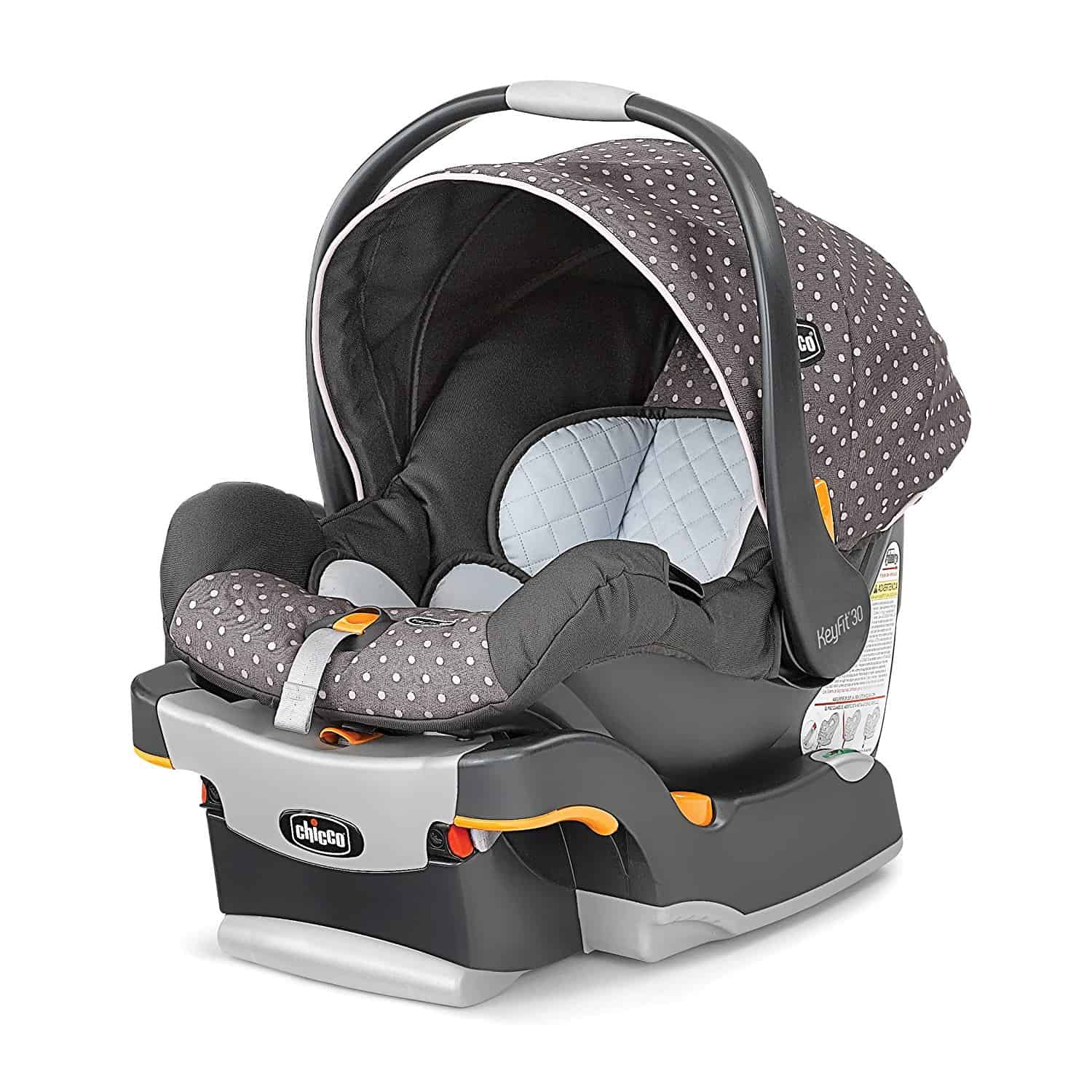
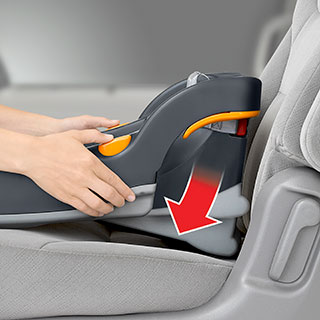
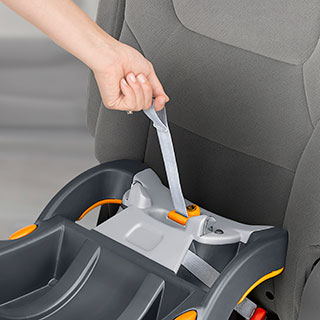
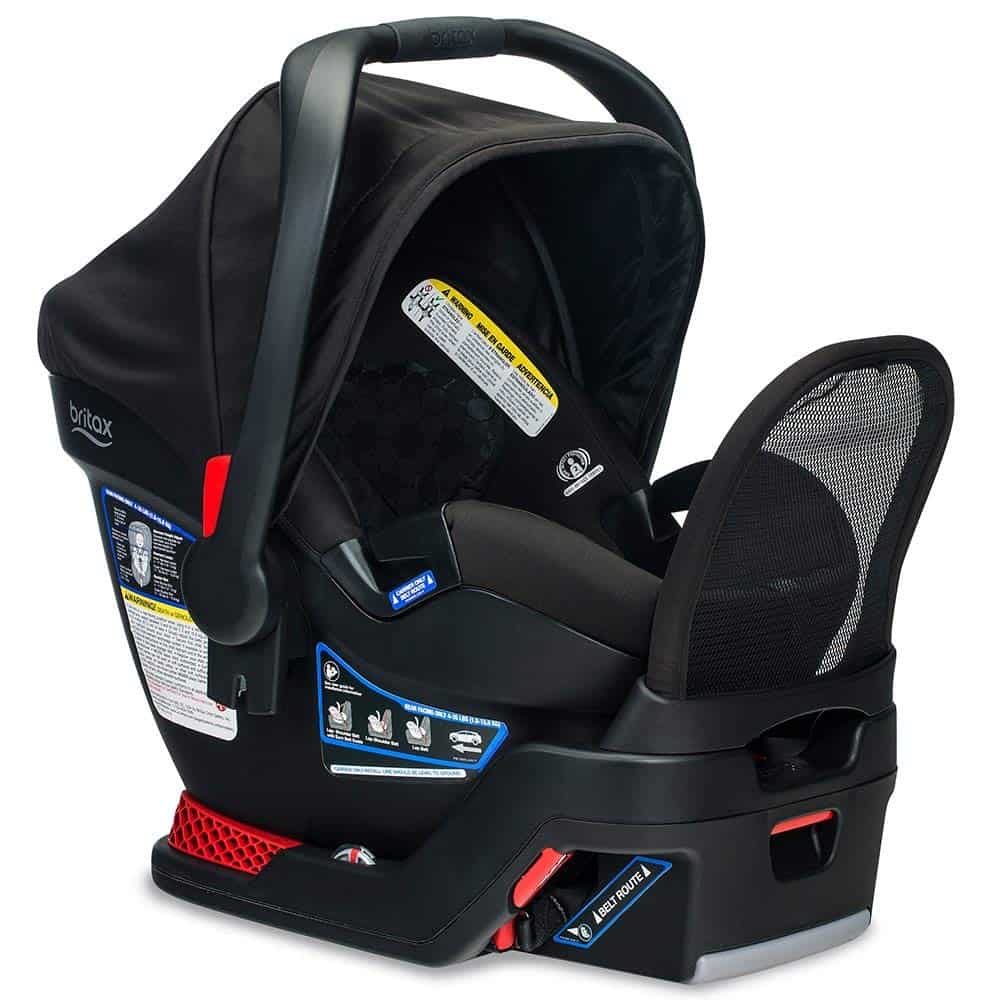

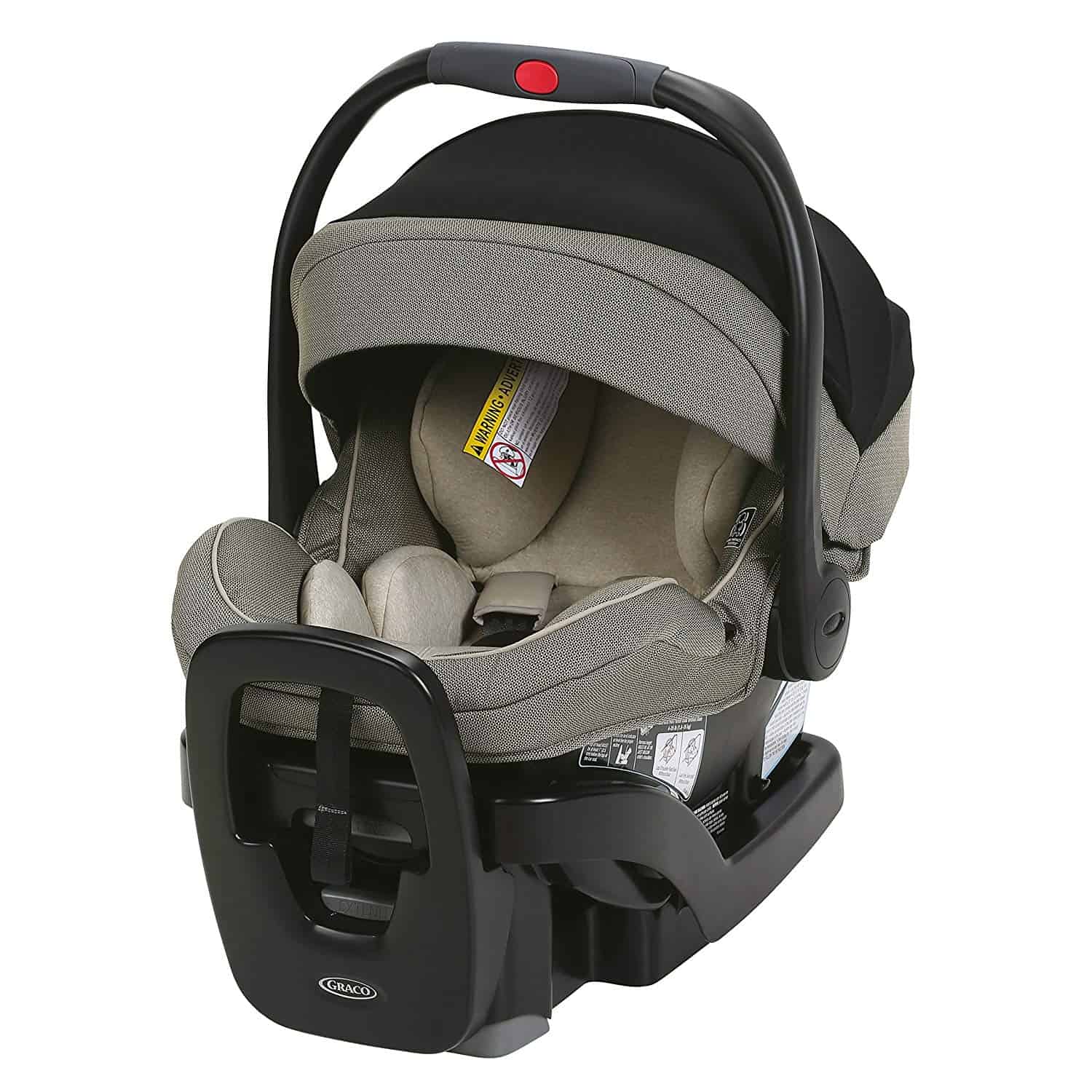
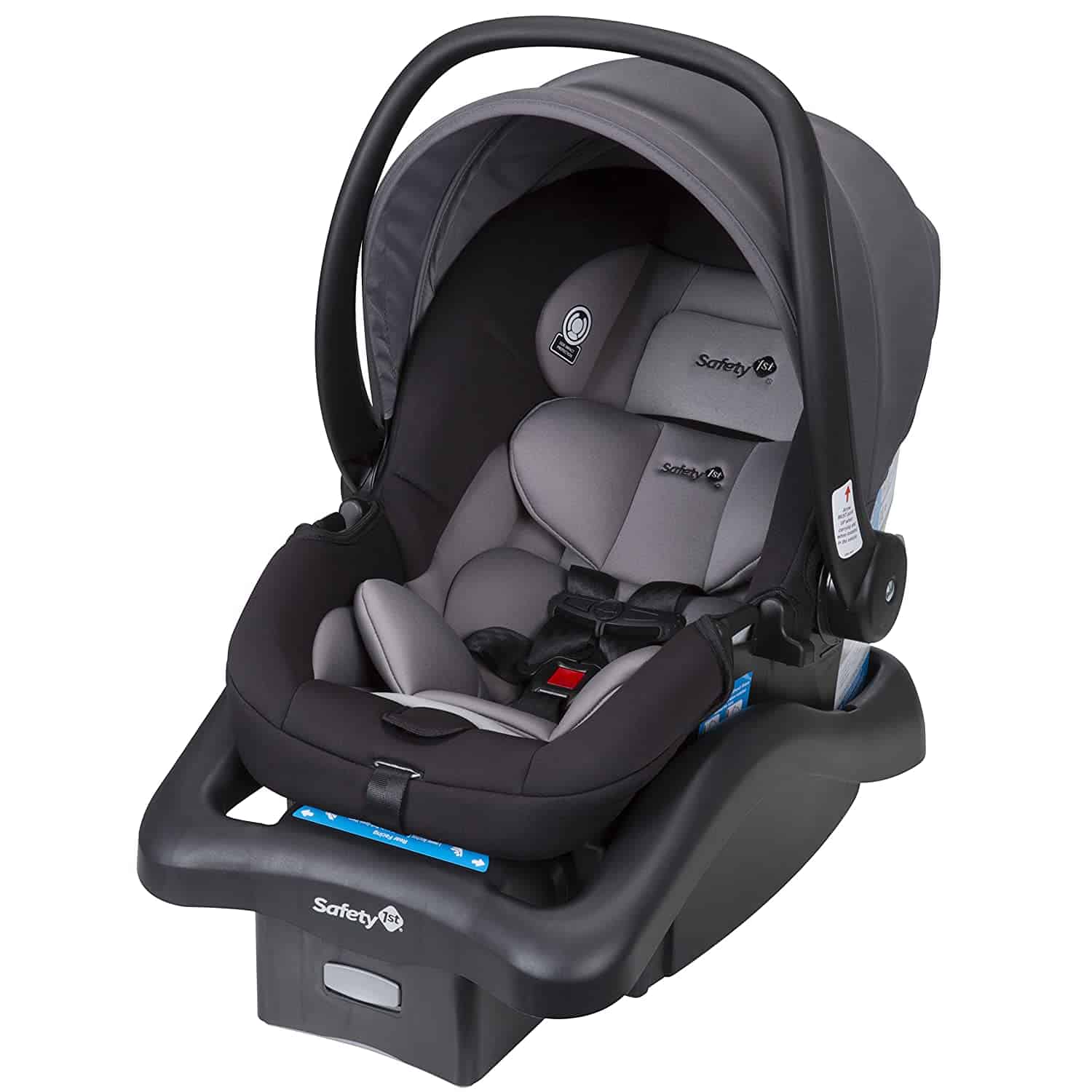
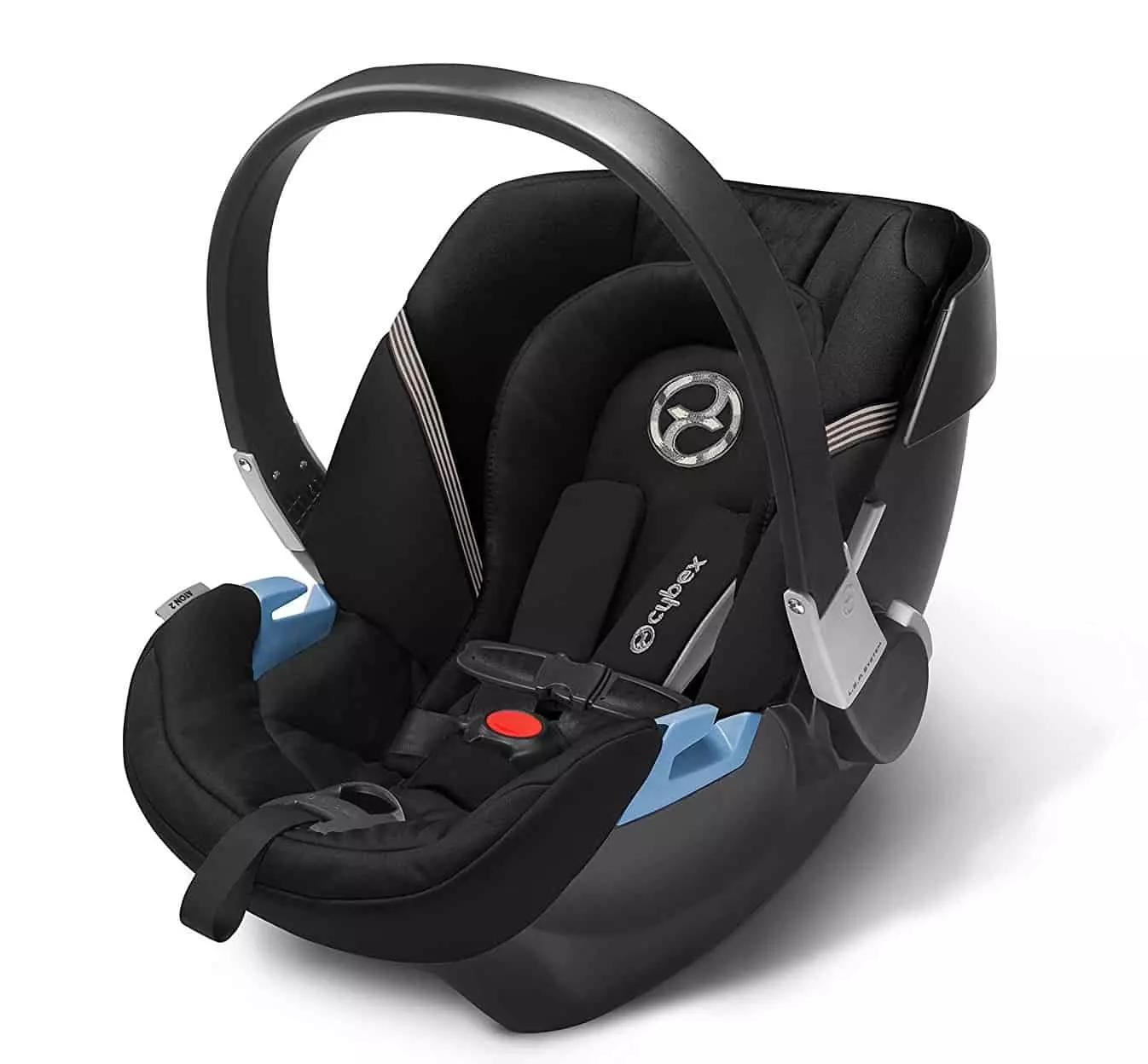
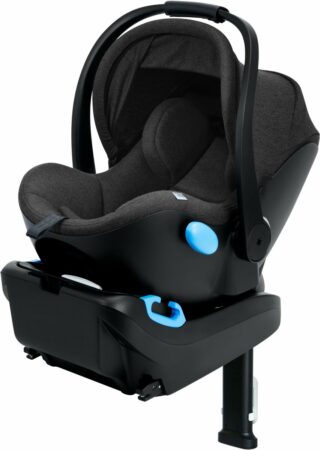

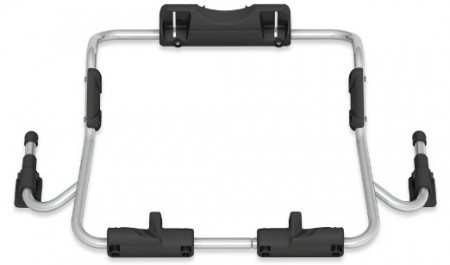
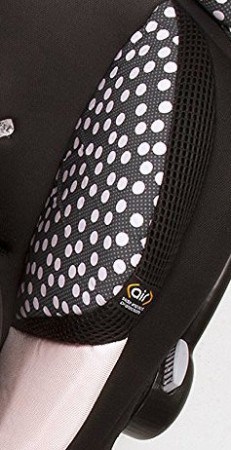
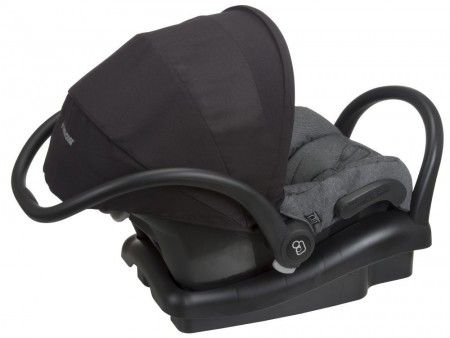
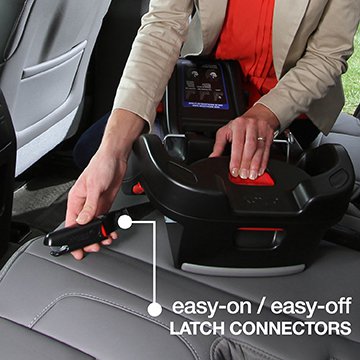
 We obsess over gear for families and the home . . . so you don’t have to. Baby Bargains has one mission: help you find the best gear for your family with unbiased reviews by experts with 20 years of experience. At prices that don’t break the bank. When you purchase a product from links on this site, we make a small affiliate commission. Learn more
We obsess over gear for families and the home . . . so you don’t have to. Baby Bargains has one mission: help you find the best gear for your family with unbiased reviews by experts with 20 years of experience. At prices that don’t break the bank. When you purchase a product from links on this site, we make a small affiliate commission. Learn more 
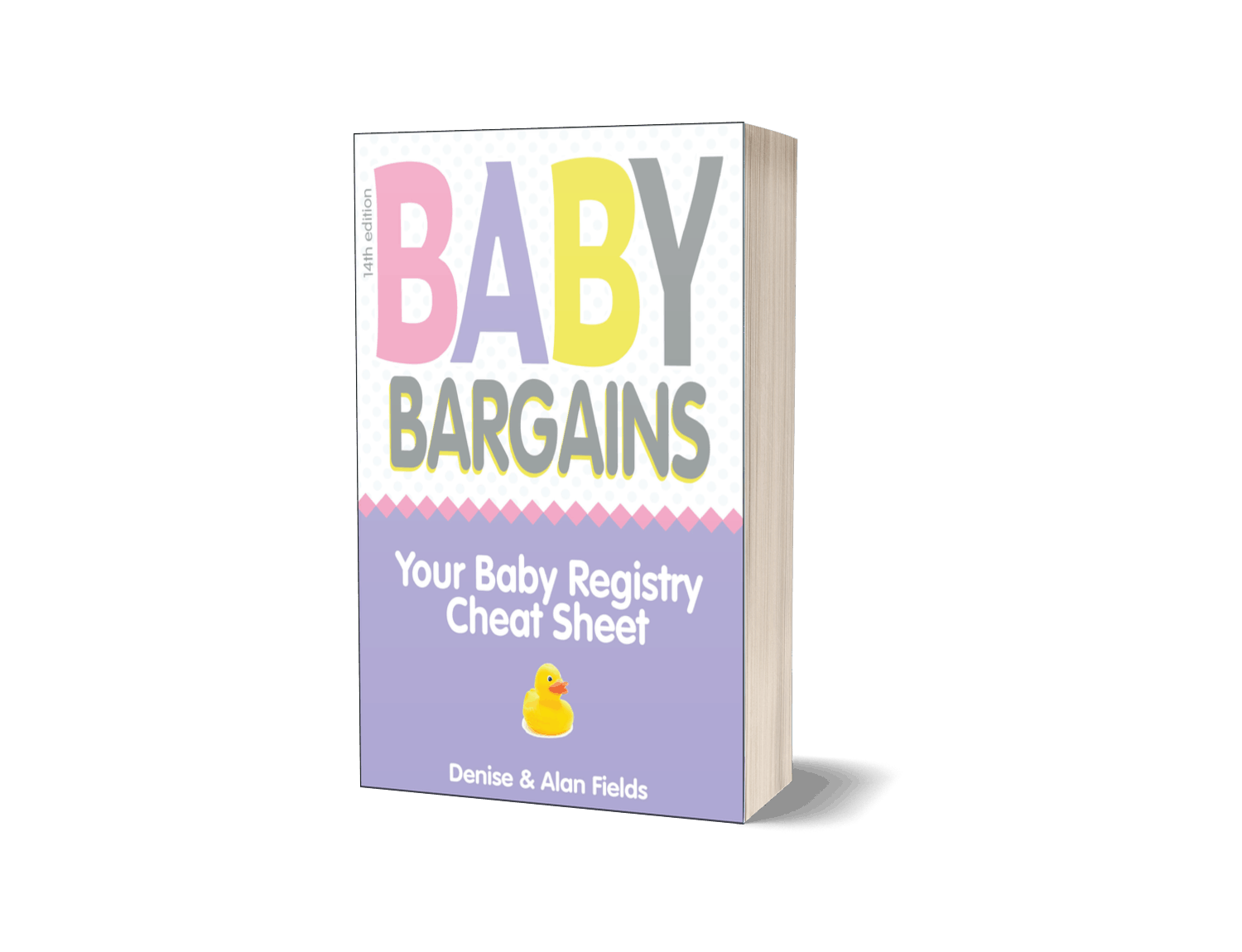
What about the new graco snugride snuglock elite with safety surround, a no re-thread harness, and easy to install base? Was that considered in your comparison?
Good question! We just updated the review with that newly released version. We would recommend the Graco SnugRide SnugLock 35 Elite Infant Car Seat—Amazon has it at $126.52 for Prime members, which is a great deal since it is a $220 retail. In a nutshell, it is very similar to the Graco SnugRide Click Connect 35 LX that we liked as a good budget-friendly seat, but with an upgraded base for easier install.
The Amazon link for the Aton 2 actually leads to the original Aton. Are both recommended?
That was our mistake—we updated the link to point to the Aton 2, which is the one we recommend!
We are having trouble deciding between the Chico Keyfit 30 (either zip or zip air) vs. the Chico Keyfit 35 which has an anti-rebound bar. Any opinions, advice, reviews on this? Thanks!
Hi Sheena! Thanks for dropping by our site. The Chicco KeyFit 35 is new and as you noted, has the anti-rebound bar. You can also install it without a base (something other KeyFit models don’t do). That is helpful when using it in ubers when traveling, etc. So if you can afford it, we’d recommend the 35 version . . . mainly because of the added safety from the anti-rebound bar. Hope that helps!